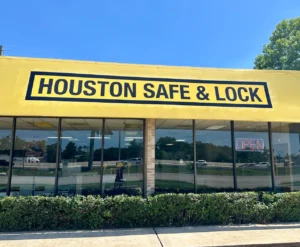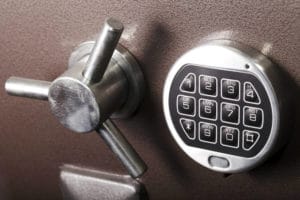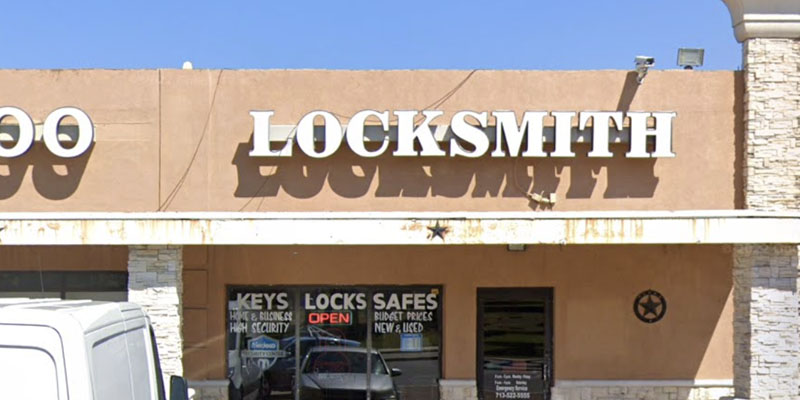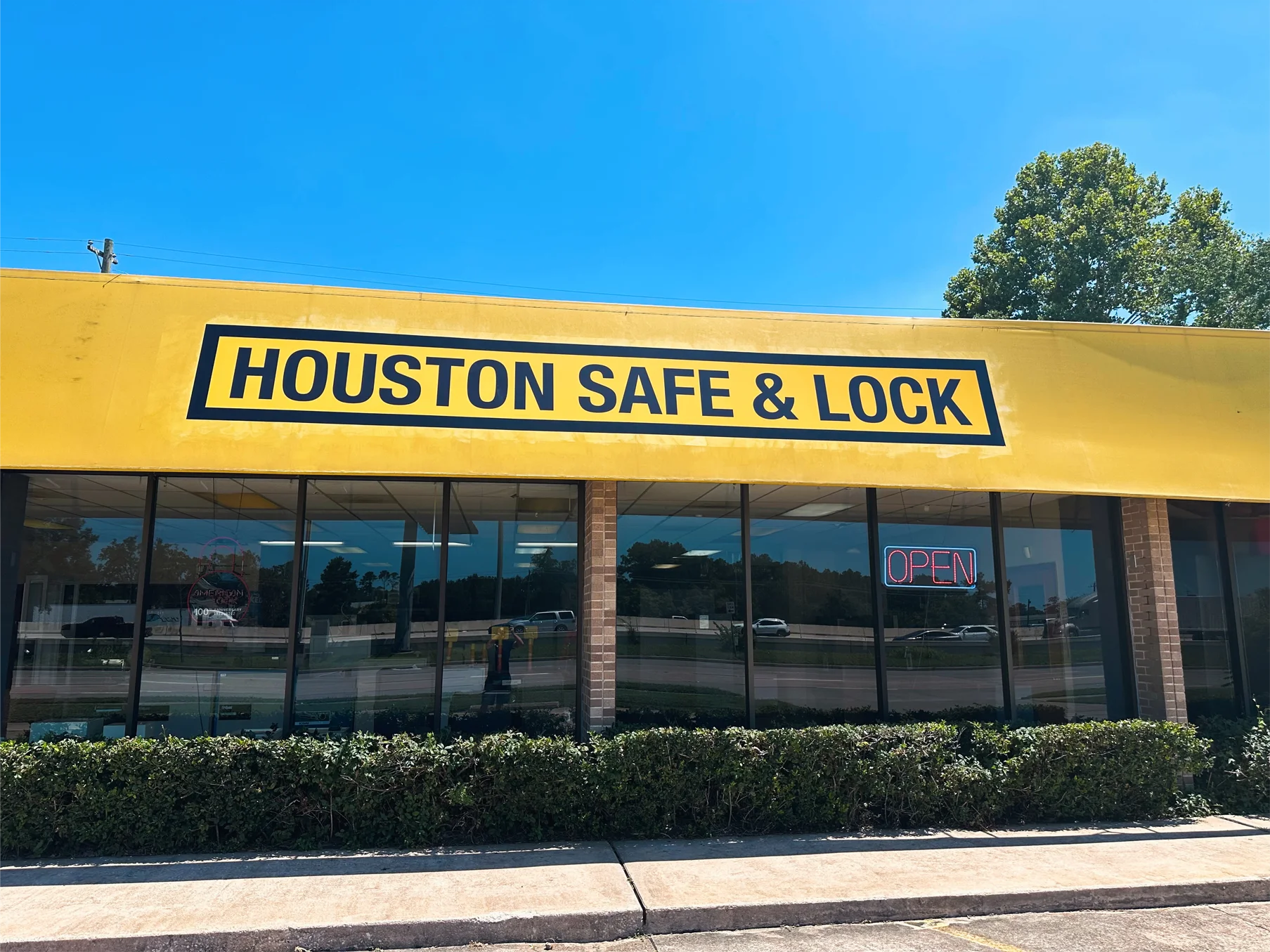
#1 installer of high-security locks
High-security & digital smart locks
Whether you want the convenience of a keyless digital smart lock or the enhanced protection of a bump-proof high-security lock, we have you covered with all the latest models from the top brands including Yale, Schlage, Kwikset, Lockly, Medeco, & Mul-T-Lock.
- Authorized Mul-T-Lock & Medeco locksmith
- Residential & commercial smart lock installation
Get smart or high-security locks for your home or office:






Why buy your locks at Houston Safe & Lock?
Superior inventory, working floor models, and state-certified locksmiths on hand to answer any question and help identify the perfect locks for you.

Medeco High-Security Locks
Are you looking for a high-security lock system? Medeco high-security locks have been designed to keep both your home and your business safe. Medeco locks come in a wide range of sizes and styles to match any residential or commercial security need. Medeco locks are known for being one of the strongest mechanical locks available today, and they’re backed by strong patents and key control agreements. Houston Safe & Lock is an authorized Medeco dealer and we can install new locks on your home or business.
Mul-T-Lock High-Security Locks
Do you want to protect your home or business with a high-security lock that is both pick and bump-resistant? Mul-T-Lock high-security locks are the ideal solution for keeping your building secure. Houston Safe & Lock is an authorized dealer and service center for Mul-T-Lock locks and deadbolts and can install them on your home or business.
Yale Digital Smart Locks
Make your home smarter with Yale digital smart locks, now available at Houston Safe & Lock. Yale’s keyless lock system features Wi-Fi capability that can be managed through your smartphone, allowing you to control who has access to your home. The newest models of yale smart locks come with DoorSense technology, which automatically locks the door behind you as you leave, so you never have to worry about forgetting or losing your keys again. Call or schedule service with one of our Houston locksmiths today & get Yale digital locks installed on your home or business.
Kwikset Digital Smart Locks
Kwikset strives to promote convenience, security, and safety for homeowners and families through an innovative approach to smart technology. Kwikset creates intelligent lock systems that use smartphone technology to allow users to monitor their home remotely, securely manage access codes, protect against theft and break-ins, and receive alerts when there is unauthorized entry into a home. You can also set up notifications for when doors are opened or closed (as well as when specific user codes are used). Call or schedule service & install Kwikset digital locks for your home or business.
Lockly Digital Smart Locks
Lockly redefines how you secure your home by using state-of-the-art technology to create a truly smarter lock. Built with the latest fingerprint scanning systems, infrared cameras, and the most advanced security algorithms available, Lockly creates the most secure locks on the market today. With the touch of a button, Lockly’s biometric fingerprint scanner automatically opens your door for you. Lockly can also be programmed to unlock for other people who you’ve added to your app–it’s like having a personal butler. Give us a call – our Houston locksmiths can set up & install Lockly digital locks for your home or business.
Schlage Digital Locks
Are you ready to upgrade your home with a smart lock? The Schlage Encode Plus Smart WiFi Deadbolt makes locking up simple – without worrying about keys. Lock and unlock your door with a touch of your fingertips using the Schlage Connect app, or remotely from anywhere you have an internet connection. The customizable settings offer versatile options so each family member can have their own access code, or set one master code that gives guests easy access to your home without disrupting your day-to-day routine. Call or schedule service today with one of our locksmiths to install Schlage digital locks for your home or business.
– High-Security Locks –
Protect your home & business
We carry the most impenetrable line of locks and deadbolts in the world. Nothing will keep your home or business better protected than a professionally installed, high-security lock.
1
Pick proof
Lock picking kits can be ordered online without a background check and a picked lock doesn’t leave any evidence.
2
Bump proof
Designed for locksmiths, “bump” keys are now publicly available. It can access any cylinder lock, the kind used in most homes.
3
Drill proof
Not discrete, but that won’t matter if you’re not home. Drilling is incredibly effective at breaking through standard locks.
4
Key controlled
Multiple access points on your property with separate keys can be a pain. We offer “master” key systems for complete control.
5
Duplication proof
99% of home keys can be duplicated at any home improvement store. Our high-security keys can only be duplicated by us.
6
Used by law enforcement
Feel safer knowing that the brands of locks we sell and install are the exact same ones used by Houston law enforcement
Every top brand under one roof
Houston Safe & Lock carries the latest high-security locks, deadbolts, and strike plates from Medeco, Mul-T-Lock and Tuff Strike.
Directions to our storeExperience high-security locks before your buy with our showroom demo models
Get professional installation by certified locksmiths
High-security locks are only as good as the level they’re installed. Our Texas State-certified locksmiths each have hundreds of hours of experience professionally installing and testing our lock offerings.
Our on-staff locksmiths are licensed, bonded and insured to provide you the best experience.
– Digital Smart Locks –
The best in safety & convenience
We carry the latest models of digital touchpad smart locks from Yale. Forget your keys for good + easily grant access to your home or business.
1
Keyless
Always seem to forget where you put your keys? Smart locks offer completely keyless entry & exit for your home or office.
2
Smart
Can’t remember if you locked up before bed? Yale smart locks can be programmed to auto-lock whenever you want.
3
Access-controlled
Make the fake rock a thing of the past with digital key sharing. Send your guests one-time or reusable passcodes.
4
Secure
Easily change or reset your passcode, set up user-specific pins, and even remove guest access right from the app.
5
Resistant
Palm wakeup makes your touchpad fingerprint-resistant & each model is glare-resistant and glove-friendly.
6
Automatic
Automatically keeping you safe with auto-lock and temporarily disabling the touchpad after 3 failed attempts.
Touchpad digital smart locks
Leave your keys behind for good with the latest models of smart locks from Yale. Get the convenience of nighttime auto-lock and code sharing to make sure your wanted guests have access.
Directions to our storeExperience digital smart locks before your buy with our showroom demo models
Available for residential homes, warehouses, retail or commercial offices
Our in-stock models of digital smart locks are guaranteed to fit all standard door frames.
Get an on-site quote for professionally installed digital smart locks for your business
Learn about the danger of “bump” keys
King Safe & Lock changes name to Houston Safe & Lock – Memorial
Houston and King Safe & Lock have been under the same ownership group for over 12 years, and effective May 24th, we are changing King Safe & Lock’s name to “Houston Safe & Lock – Memorial”. This change will help us unify our brand and improve our ability to provide our customers with the best selection of safes and security solutions in the Houston area.
Continue Reading King Safe & Lock changes name to Houston Safe & Lock – Memorial
Protecting Your Privacy: Houston Safe & Lock Stands Firm Amid the Liberty Safes Controversy
Amid the Liberty Safes controversy over FBI access, Houston Safe & Lock emerges as the trusted choice, prioritizing customer security and brand integrity.
How to Choose a Gun Safe: A Comprehensive Guide
In this comprehensive guide, we’ll simplify the gun-safe buying process for you. In the following sections, we will delve into crucial aspects such as budget considerations, sizing your gun safe, deciding on its optimal location, understanding fire protection ratings, and choosing between digital and mechanical locks.
Continue Reading How to Choose a Gun Safe: A Comprehensive Guide




